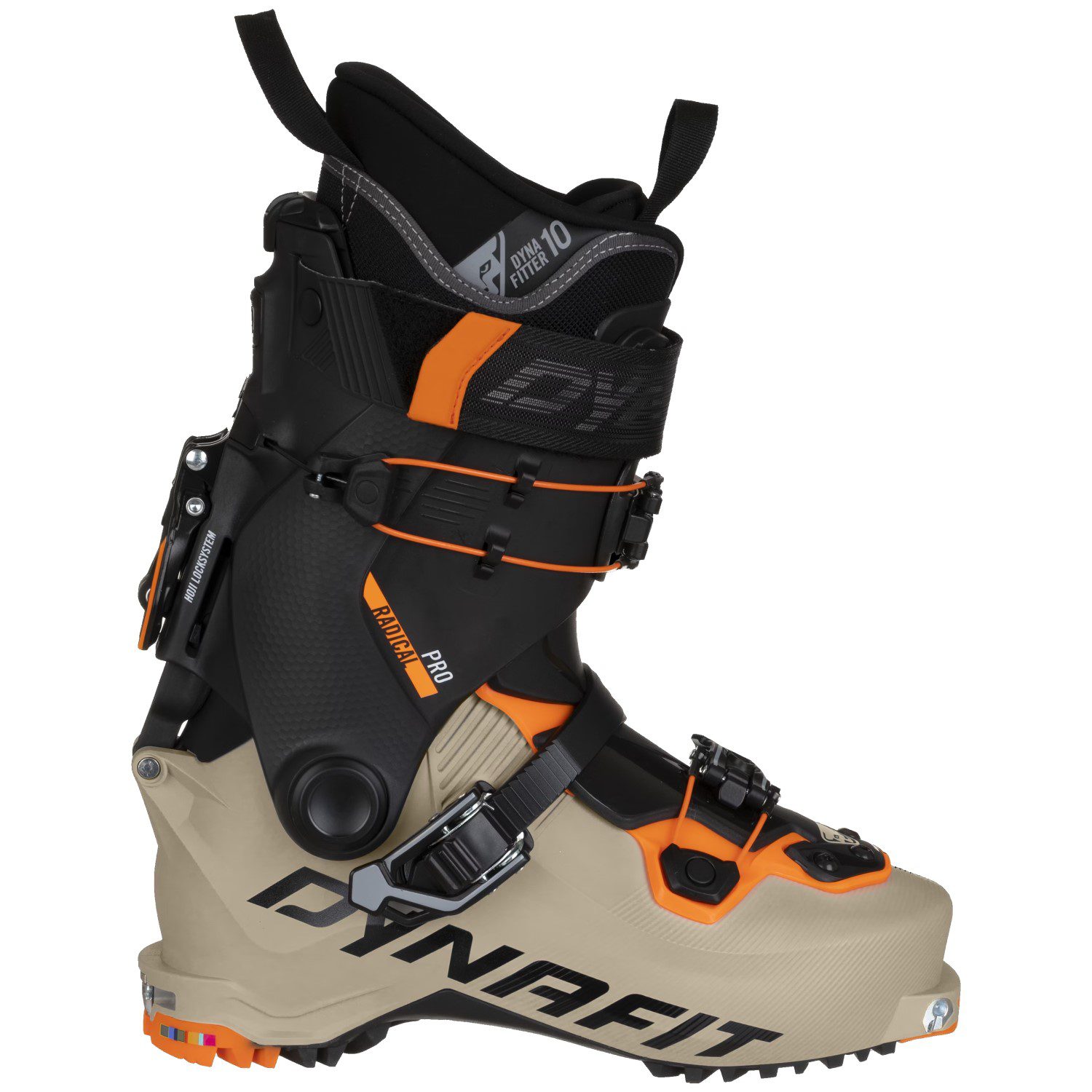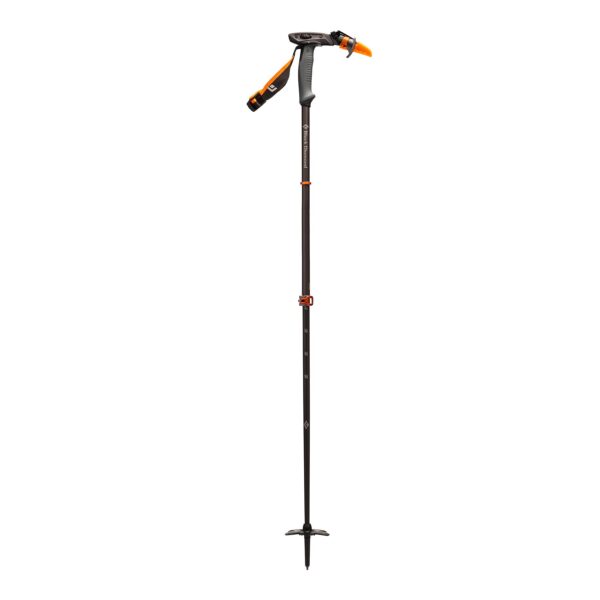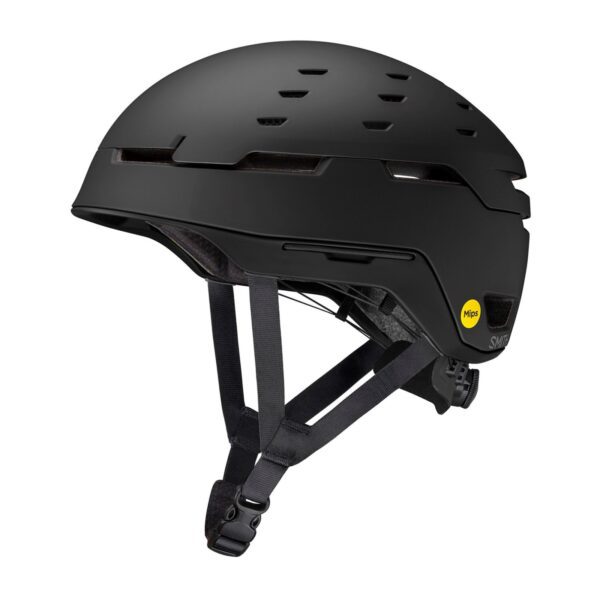Home / Shop / Ski Equipment / Ski Boots / Dynafit Radical Pro (2024)
Dynafit Radical Pro (2024)
$1,599.90
gnomes V.I.P Club offers members special discounts on current season products. It’s free to join. Login or Register.
Description
A game-changer in ski touring boots, the Dynafit Radical Pro features the innovative Hoji Lock System and boasts increased volume compared to its predecessors. This robust all-around boot refuses to compromise on performance or comfort, excelling both uphill and downhill. Experience the perfect blend of lightweight design, exceptional range of motion, and added volume over the instep. The revolutionary 60° cuff rotation, achieved through the separation of the cuff and shell, ensures resistance-free efficiency during ascents, allowing for unrestricted movement. This uphill powerhouse doesn’t just stop there – its prowess extends to downhill terrain. The one-handed Hoji Lock system facilitates swift transitions, while the 11° forward lean keeps your calves content, and the 120-flex pattern provides maximum power and stability. Grilamid construction keeps the weight at a mere 1400g (size 26.5cm). Equipped with the Ultra Lock Strap and micro-adjustable buckles for a customised fit, ensuring you’re prepared for those extended touring days with a satisfied grin on your face. Say goodbye to compromises and embrace the Dynafit Radical Pro – where performance, comfort, and efficiency converge.
Dynafit stats:
- Fit: Wide
- Flex: 120
- Last: 103.5mm
- Weight: 1400g (26.5cm)
- ROM: 60°
Gnomes Fit:
- Forefoot: Wide
- Instep: Medium
- Heel: Medium
- Weight: TBAg (26.5cm)
Binding Compatibility: MNC, Sole ID, Pin Tech
Soles: Pomoca Climb Tour
Shell: Grilamid
Cuff: Grilamid with Glass Fibers
Liner: Radical Pro Liner
Buckles: Safety Lock + Micro
Powerstrap: Ultra Lock Strap
Forward Lean: 11°
Hoji Lock System
This closure system, operated with just one quick motion of the hand at the heel of the boot, starts the inner workings of the system. With that, two pins, one each to the left and the right of the heel, are pushed together like a tongue and groove and thus create one unit of the upper and shell. The Hoji Lock System results in the boot remaining flexible on the climb like a traditional ski touring boot, but then on the descent as rigid as a purebred alpine ski boot. The interaction between cuff and shell with the body position on the descent, which often occurs with ski touring boots, is now simply a thing of the past.
Master Step
Just One Click – revolutionised step in Tech bindings. The patented Master Step insert makes the entry even more easy. 50% easier entry. This is achieved through longer guidance grooves which are locking onto the binding’s pins in a semi-circular upper overlap.
Flex Tongue
Flexible tongue construction made of two different high-tech synthetics ensures an energy saving, natural walking movement even on steep terrain.
Additional Features:
- Ultra-Lock Strap
- Driver Spoiler 2.0
- Micro regulation
- Progressive Forward Flex
Ability Levels


Choose your items confidently by reading our buying guide.
Related Gear
We are a team of passionate skiers, our lives are entangled in a world of snow, mountains & ski paraphernalia. Take a look at how we can help you.
Buying guide
Ski boot fitting is something we take very seriously at Gnomes. It requires a wealth of knowledge and years of experience to see you right. There are several factors to consider when fitting boots including but not limited to: foot shape, foot profile, size, ability, age, biomechanics, goals and previous issues. It is always recommended you visit us instore for a full custom ski boot fit.
Beginner – Intermediate

This level covers new skiers that are getting to grips with the basics through to those who are cruising around the slopes linking turns top to bottom. Skiing predominantly on the groomed/prepared trails. This gear is more forgiving and encourages good progression to the next level.
Intermediate – Advanced

A majority of skiers fit into this level. These skiers can carve a good turn on the groomers as well as ski steeper freeride terrain or powder. This ability can ski with good speed and finesse in most snow types. The gear suited for this level can be pushed but is unlikely to be punishing if technique is off or a more chilled approach is taken.
Advanced – Expert

Experienced skiers that have an aggressive ski style and demonstrate a higher level of technique whether on groomed runs or the steepest chutes on the mountain. These skiers demand stronger equipment that is performance focused, usually stiffer and requires more input to get the most out of it.
There are three main measurements of the foot we look at to gauge the best boot selection. Although these are the main areas we look at it’s still not quite that simple, biomechanics and flexibility also have a major contributing factor on the fit.
Below is an example of the fit profiles we are looking for.
A. Forefoot Width – narrow, medium or wide
B. Instep Height – low, medium or high
C. Heel Width– narrow, medium, or wide
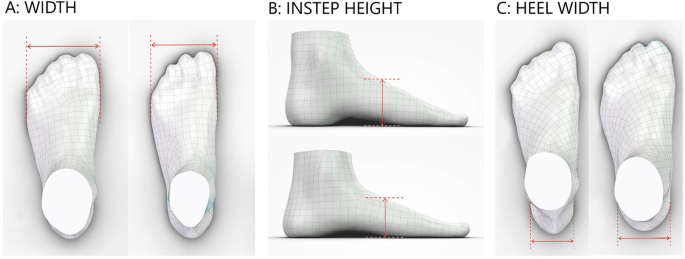
All ski boots are measured in centimetres also known as Mondo Point. Shoe sizes don’t exactly crossover with CM so the only true way to find you size is measure your foot in CM.
Note: Half (.5) centimetre sizes are the same fit as whole centimetres. E.G. 27.5cm fits exactly the same as 27.0cm, ski boot shells only come in 10mm size jumps.

Analysis
Using the latest technology, we take a scan of the foot on a pressure mapping system showing us images that can’t be seen by the naked eye, such as weight distribution and anatomical structure of the feet. This can help us identify the areas you need support. Gnomes’ experienced technicians evaluate your stance, posture and bio-mechanical makeup identifying your foot shape, flexibility, previous sporting injuries and any problem areas that may occur within a ski boot.
Footbeds
We mould the custom footbeds directly to the contours of the feet. The feet are the foundations of the entire body therefore we must support them correctly, otherwise major problems will occur. Pronation and supination are normal bio-mechanical motions that the foot must engage in to perform correctly. When either of these motions becomes excessive they can cause foot fatigue, knee, hip and back pain. Gnomes’ custom footbeds will prevent this from happening. All foot types including neutral feet benefit from custom footbeds by improving comfort, performance and weight distribution while aligning the lower leg to decrease fatigue, impact and shock.
Boot selection
At Gnomes we have a large range of ski boots to accommodate all foot types, and abilities. After your foot analysis your technician will select two or three ski boots that are correct for your foot shape, ability, fitness level and future goals. Together you and your technician will the find the best fit. Once the final boot has been selected, you will add in your custom made footbeds and complete the following if needed:
Shell Modification: We may need to carry out some stretching to the plastic shell of the ski boot to accommodate the foot using our ski boot press. This is a simple process and makes for a fully custom shell offering maximum comfort.
Liner: Liners can be moulded and modified as needed in order to aid in initial comfort. There are also options for aftermarket liners that can have added benefits over the stock liners.
Cuff Alignment & Canting: Once you have the correct ski boot for your foot shape, and custom footbeds supporting your foot in the correct way, we need to align the cuff for the correct weight distribution on your skis. Bearing in mind that some of the miss aliment happening in your lower leg can be caused from over-tight or unbalanced muscles, your technician will work through a program that helps you to improve this.
- Make sure you budget for a custom footbed, this makes or breaks the comfort of the fit. You need to support the foot
- Invest in a good quality, technical sock that wicks moisture away from the foot and offers padding where you need it the most. We typically like working with thin socks for the best results. Don’t worry thin doesn’t mean cold!
- Only ever wear one pair of socks at a time
- Do not tuck thermals into your ski boots or socks, this can cause pressure points
- Almost everyone will NOT find a ski boot comfortable straight off the shelf. Customisation is nearly always required
- Do not try on every ski boot in the shop as there are only one or two that will fit your foot type and it will confuse you in making a final decision. See a shop with technical boot fitters that can advise
- Ski boots are snug and toes WILL touch the end when walking around in a ski shop. However this will change once in “ski position” (knees bent) with the buckles tightly secured
- Do not over tighten your buckles. If you feel the need to, its likely the boot is too big in volume for you
- Store your ski boot done up when not in use
There are three main sole types on the market, most of the boots we sell fall into these categories.
Alpine (DIN) soles – ISO 5355: These are the most common sole types, found on most inbound boots and race boots. They have been around the longest and offer the best binding and boot coupling interface but they are not the best for walking around due to low grip.
GripWalk soles – ISO 23223: This sole type is becoming much more popular as it offers more grip when walking around, plus a rockered toe plate to aid with walking. To use this boot the binding must display a GW, Sole I.D or MNC symbol.
Touring soles – ISO 9523: These soles are usually found on true touring boots. They feature heavily rockered soles with thicker rubber for maximum grip. These can only usually be used in MNC, Sole I.D or bindings or pin-tech bindings.
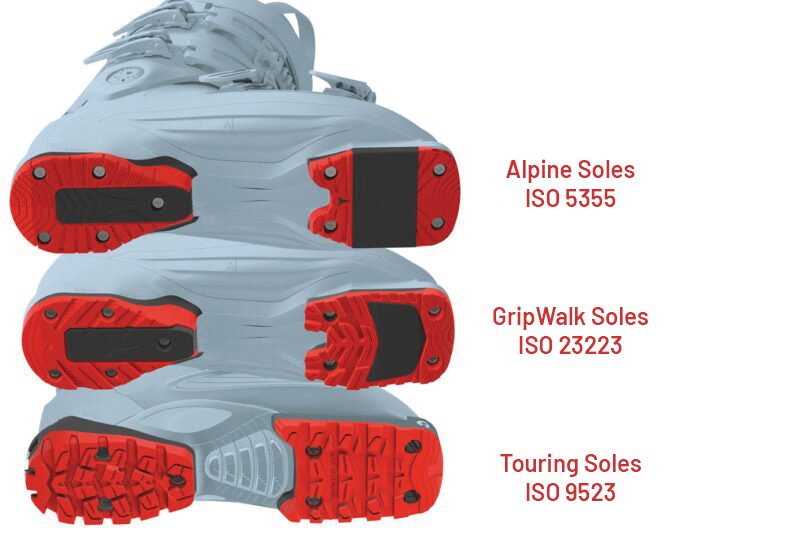

* Boot needs tech fittings to be fully compatible
Last
Boot manufacturers refer to the last of the boot, the number they state is the width across the forefoot (from 1st metatarsal head to the 5th, usually in a diagonal line). This number is a guide only, it gives a general ideal of the overall volume of the boot. 98mm = LV, 100mm = MV, 102/104mm = HV
Volume
This is the overall space inside the boot. Low Volume/LV, Medium Volume/MV and High Volume/HV. Brands usually state this number on the model.
Mondo Point
Mondo Point is a foot measuring scale; it equates to centimetres. E.g., 28 mondo = 28cm. Ski boots are measured in mondo point. All other foot measurement scales don’t convert into mondo, you must have your feet measured in mondo to get fitted to ski boots.
Cuff Alignment
This can often be referred to ‘canting’ but true sole canting is next up in the glossary. Cuff alignment adjustment can be found of the side rivets between the boot lower and cuff. Sometimes you can adjust both sides, other times it’s just one side. Cheaper boots have no cuff alignment.
Sole Canting
Canting wedges or plates are fitted to the underside of your boot before routing the toe and heel lugs back to DIN. The aim is to have you ski bases running perfectly flat. Gnomes can carry out full canting assessment and fitting of plates.
Zeppa
This is the internal base board. In some case these are removable so it can be ground-down to create more space over the instep.
Lifters
Lifter plates usually come in 3mm & 5mm. These typically are fitted to race boot soles (non-changeable heel & toe plates). These add protection in terms of wear, stop boot from dragging at high angle carving and create a great carving angle.
Flex Index
Each boot has a stated flex, the higher the number the stiffer the flex. Men’s boot we stock range from 90 – 140 and women’s 70 – 120. Take these numbers with a pinch of salt as there is no testing, it’s simply a gauge the manufactures assign the boot.
GripWalk
GripWalk or GW soles are slowly replacing standard alpine soles for the most part. They are grippier and have rocker on the toe making it slightly easier to walk in.
Power Strap
A piece of Velcro material that acts like a 5th buckle around the lower leg. This strap can be upgrade to an aftermarket strap like Booster for better rebound properties.
